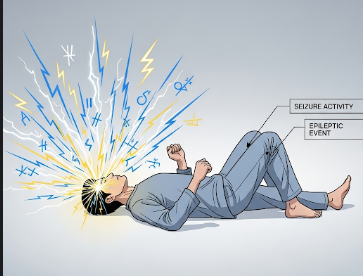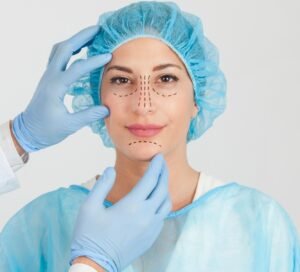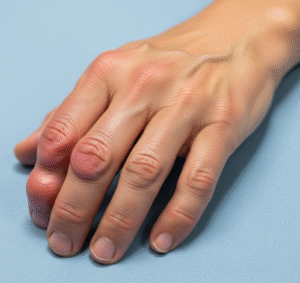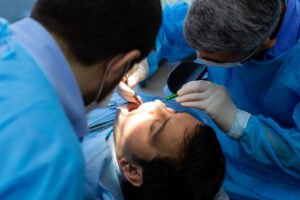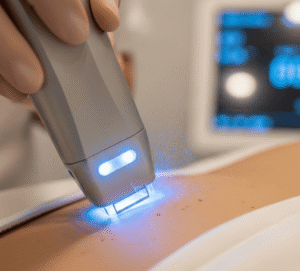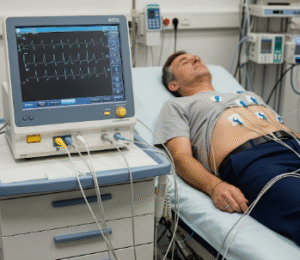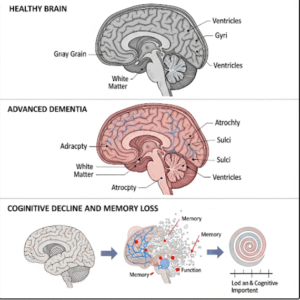Overview
Fits, medically known as seizures, are sudden, uncontrolled electrical disturbances in the brain that can affect movement, behavior, consciousness, or sensations. Seizures range from brief lapses of attention (absence seizures) to full-body convulsions (tonic-clonic seizures). In Korea, neurology clinics and specialized epilepsy centers offer advanced diagnostic tools, including EEG (electroencephalography), MRI scans, and blood tests, alongside personalized treatment plans. Early recognition and treatment are crucial to prevent injury, manage underlying causes, and improve quality of life.
Highlights:
➤ Sudden episodes of abnormal brain activity affecting movement, sensation, or awareness
➤ Can be triggered by neurological, metabolic, or structural brain issues
➤ Early diagnosis and management reduce complications and improve prognosis
Key Facts
➤ Prevalence: Affects approximately 1% of the global population; higher incidence in children and older adults
➤ Age affected: Can occur at any age; some seizure types are age-specific
➤ Gender: Slightly more common in males for certain types
➤ Impact: May cause injuries, affect daily life, and carry social or psychological consequences
➤ Prognosis: Many seizures can be controlled with medications or interventions; some require long-term therapy
What are Fits (Seizures)?
Seizures are caused by sudden, abnormal electrical discharges in the brain, which can affect motor control, awareness, behavior, or sensory perception. Types of seizures include:
- Focal (partial) seizures: Affect one area of the brain; may cause localized symptoms such as twitching or unusual sensations
- Generalized seizures: Affect both hemispheres of the brain; includes tonic-clonic, absence, myoclonic, and atonic seizures
- Status epilepticus: A prolonged seizure lasting more than 5 minutes, requiring emergency treatment
Highlights:
➤ Fits are a symptom of abnormal brain activity
➤ Symptoms vary depending on seizure type and brain region affected
➤ Accurate classification is essential for effective treatment
What Symptoms Are Related to Fits?
➤ Loss of consciousness or awareness – sudden and temporary
➤ Convulsions or jerking movements – tonic-clonic seizures involve full-body shaking
➤ Staring spells or unresponsiveness – typical in absence seizures
➤ Unusual sensations: Tingling, visual changes, or auditory hallucinations
➤ Behavioral changes: Confusion, repetitive movements, or automatisms
➤ Postictal phase: Fatigue, headache, or disorientation following a seizure
➤ Injury or tongue biting in generalized convulsions
Highlights:
➣ Symptoms help differentiate seizure types and identify severity
➣ Awareness of associated signs aids in early recognition and first aid
What Causes / Possible Causes
➤ Epilepsy: Chronic disorder causing recurrent seizures
➤ Brain injury: Trauma, stroke, or infections such as meningitis or encephalitis
➤ Metabolic disturbances: Hypoglycemia, electrolyte imbalances, or kidney/liver dysfunction
➤ Genetic predisposition: Certain gene mutations increase seizure susceptibility
➤ Brain tumors or structural abnormalities: Can trigger abnormal electrical activity
➤ Alcohol or drug withdrawal: Sudden cessation of substances may precipitate seizures
➤ Fever: Febrile seizures in children
➤ Medications: Some drugs lower seizure threshold
Highlights:
➣ Seizures have multifactorial causes including neurological, metabolic, structural, and genetic factors
➣ Identification of the underlying cause is crucial for targeted therapy
When Should I See My Doctor?
➤ First-time seizure or unexplained episode
➤ Recurrent seizures or clusters
➤ Seizures lasting longer than 5 minutes (status epilepticus)
➤ Injury or prolonged confusion after a seizure
➤ Associated neurological symptoms: Weakness, vision changes, or speech difficulties
Highlights:
➣ Early consultation at a Korean neurology or epilepsy center ensures accurate diagnosis and safety
➣ Timely evaluation prevents complications, recurrent seizures, and injury
Care and Treatment
➤ Initial assessment: Detailed history, EEG, blood tests, and neuroimaging
➤ Medications (antiepileptics):
- Sodium valproate, levetiracetam, carbamazepine, or lamotrigine depending on seizure type
➤ Lifestyle modifications: - Adequate sleep, stress management, avoidance of seizure triggers
➤ Emergency care: For prolonged seizures or status epilepticus
➤ Surgical options: - For drug-resistant epilepsy, procedures such as resection or vagus nerve stimulation
➤ Monitoring: Regular follow-up to assess seizure control, side effects, and medication levels
Highlights:
➣ Effective care combines pharmacological therapy, lifestyle management, and emergency preparedness
➣ Multidisciplinary approach improves safety and long-term control
Treatment Options in Korea
Medical Treatments:
➤ Neurology clinics: Diagnosis and management of epilepsy and seizure disorders
➤ EEG monitoring units: Detect abnormal brain activity and classify seizure type
➤ Medication management: Tailored antiepileptic drug therapy
Advanced Procedures:
➤ Epilepsy surgery: For patients with localized seizure foci resistant to medication
➤ Vagus nerve stimulation or responsive neurostimulation: For drug-resistant seizures
➤ Hospitalization: For status epilepticus or severe recurrent seizures
➤ Follow-up care: Continuous monitoring and adjustment of therapy for optimal seizure control
Rehabilitation & Support:
➤ Education on seizure first aid, safety precautions, and lifestyle management
➤ Psychological support for anxiety, depression, or social stigma related to seizures
➤ Multidisciplinary team including neurologists, rehabilitation specialists, and mental health professionals
Highlights:
➣ Korean clinics provide advanced diagnostic tools, individualized treatment, and comprehensive support
➣ Early and consistent management improves quality of life and reduces seizure risk

